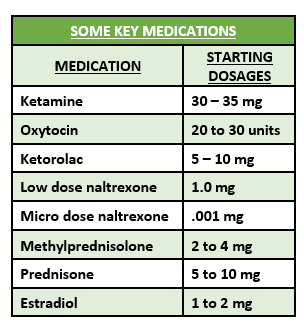DEA Suspension of Doctor’s License Leads to Double Suicide
/By Pat Anson, PNN Editor
Another chronic pain patient, along with his wife, has fallen victim to the Drug Enforcement Administration’s ongoing war against doctors who prescribe opioid medication.
61-year-old Danny Elliott and his 59-year-old wife Gretchen were found dead in their Georgia home Monday. Police are calling it a double suicide.
Family and friends say Elliott – who lived with severe intractable pain for over two decades -- was distraught over the suspension of his doctor’s DEA license to prescribe opioids and other controlled substances. Dr. David Bockoff, a longtime pain management specialist in Beverly Hills, California, was notified about the suspension by a Department of Justice attorney last week.
“OMG. I called for my phone appt on Tuesday, apparently just a couple of hours after they took his license to prescribe. Because I was due for my next Rx’s, I’m now totally out,” Elliott posted on Twitter days before his death.
“It’s the end of the road for me with doctors. Not sure what happens now but it’s going to be brutal.”
No reason was given for the suspension, according to Bockoff. The DEA confirmed to PNN that Bockoff’s license to prescribe was suspended, but declined to comment further because the case is under administrative review.
Danny and Gretchen Elliott
“Their blood is on the DEA’s hands,” Bockoff said about the deaths of the Elliotts.
Some of Bockoff’s patients, including Elliott, traveled thousands of miles from out of state to see him because they were unable to find doctors locally who were willing to treat their pain. Bockoff can still practice medicine in California, but without an active DEA license he cannot prescribe opioids – which are essential, life-giving medications to patients like Elliott.
“I talked to my sister on Sunday,” said Eric Welde, Gretchen’s brother. “They were very distraught because they heard that Doctor Bockoff was not going to be able to grant them another prescription because the DEA had gone after him and said he couldn’t prescribe anymore, otherwise he was going to jail or something. That hit them very hard like a ton of bricks.”
Welde says his brother-in-law suffered from severe chronic headaches after he was electrocuted in a freak accident 22 years ago. A former pharmaceutical rep, Elliott was unable to work and was dependent on opioids to have any quality of life. In the days before his death, Welde says Elliott was so desperate for pain relief that he tried unsuccessfully to buy drugs on the black market.
“I’m angry at the DEA. And I’m angry at the whole medical system. Because he was clearly in pain. He was not a junkie,” Welde told PNN. “There’s this whole stigmatism towards pain management that you should just be able to get over it. It’s like telling a diabetic that you don’t need insulin anymore. And it’s brutally wrong.
“But it’s perfectly acceptable to bring thousands of pounds of illegal fentanyl over and sell that on the black market. But this is a more worthwhile cause for the DEA, which just absolutely floors me.”
Bockoff Patients ‘Among the Sickest’
“This unwarranted harassment of long-established pain doctor David Bockoff is almost beyond belief,” says Kristen Ogden, whose husband Louis is a patient of Bockoff’s. The Ogdens live in Virginia and traveled monthly to California to have Louis’ prescriptions written and filled.
“These patients, including my husband Louis, are among the sickest people there are and yet they have been able to achieve and maintain a good quality of life with Dr. Bockoff's care and the pain medications he prescribed,” Ogden said. “Now Danny Elliott, a man Louis and I were privileged to call our friend, has ended his life because he could no longer endure such horrific pain and his sweet, caring wife Gretchen apparently chose not to live on without him. Who can explain why it was okay to take away this man's medication?”
“Just sick over Danny and Gretchen. I'm a Bockoff patient as well, all of my meds were due to fill the day his DEA registration was suspended,” says Anne Fuqua, a disabled nurse in Alabama who lives with dystonia and arachnoiditis, two painful conditions that cannot be cured.
Fuqua and Louis Ogden are both former patients of Dr. Forest Tennant, whose office and home in California were raided by the DEA in 2017. A DEA search warrant alleged that Tennant ran a drug trafficking organization because many of his patients came from out-of-state and were on high doses of opioids. No criminal charges were ever filed against Tennant, who retired from clinical practice a few months after the raid.
“I’m alive today because Dr. Tennant and later Dr. Bockoff chose to put themselves on the line for high-dose patients like me,” says Fuqua.
It cannot be overstated how difficult it is for chronically ill patients like Fuqua to find new doctors. Many pain management doctors have stopped taking new patients or retired, fearing they could be targeted by DEA or other law enforcement agencies for prescribing opioids.
For some patients, the pain and anxiety become overwhelming. Jennifer Adams, a 41-year-old Montana woman and former patient of Tennant, ended her life in 2018. Friends say Adams’ anxiety about losing her pain medication “was eating her alive.”
‘Not Helpful to Patients’
Dr. Bockoff has practiced medicine in California for 53 years and there is no record of him facing any disciplinary action or complaints filed with the state medical board. His office was searched by DEA agents about a year ago and patient records were taken at that time.
Bockoff says there was no warning about his suspension or the reasons for it.
“You’d have to ask them what their motivation is. I don’t know. But I would say it certainly affects patients. Any patient who has chronic intractable pain is adversely affected by this action,” Bockoff told PNN. “It’s quite scary to think that a person in pain all of a sudden is unable to get their needed medication.”
Bockoff says the DEA and DOJ agents who visited his office last week left behind a list of emergency rooms in the Los Angeles area, saying they didn’t want any of his patients to go into withdrawal. Such a list would be of no use to out-of-state patients and of little use to those locally. Many patients resist going to emergency rooms because they fear their pain won’t be treated or they’ll be viewed as drug seekers.
“I’m not sure that’s helpful to my patients,” Bockoff said.
Legal experts say the DEA has the power to suspend a doctor’s license in “emergency” situations for “imminent danger to the public health or safety.” A doctor then has 30 days to appeal the suspension to an administrative law judge, a process that can take months or years to resolve – too long for patients who have a limited supply of medication.
While the DEA has no authority to practice medicine or regulate it, the effects of its decisions are far-reaching on both doctors and patients.
“They’re certainly making judgements on the practice of medicine and they’re not qualified to do so,” said Michael Barnes, an attorney and chair of the Center for U.S. Policy, a non-profit that seeks to improve healthcare and drug policy. “The DEA is a one trick pony. It knows how to raid. It doesn’t regulate and so it employs it’s war on drug tactics against prescribers, including those who have no criminal intent.”
Ironically, the suspension of Bockoff’s license comes at a time when opioid hysteria appears to be receding, as more people become aware that street drugs are responsible for the vast majority of overdoses.
This month the CDC revised its controversial opioid guideline, giving doctors more flexibility in using their own judgement to prescribe opioids. In June, the U.S. Supreme Court ruled unanimously in favor of two doctors appealing their convictions for “overprescribing” opioids, saying doctors can prescribe opioids outside the usual standard of medical care, as long as they act in good faith.
The California Medical Board is also modifying its hard stance on opioid prescribing, which resulted in hundreds of threats of disciplinary action against doctors who prescribed high doses or had patients who overdosed.
None of these efforts, however, have reined in the DEA or prevented tragedies like the suicides of Danny and Gretchen Elliott.















